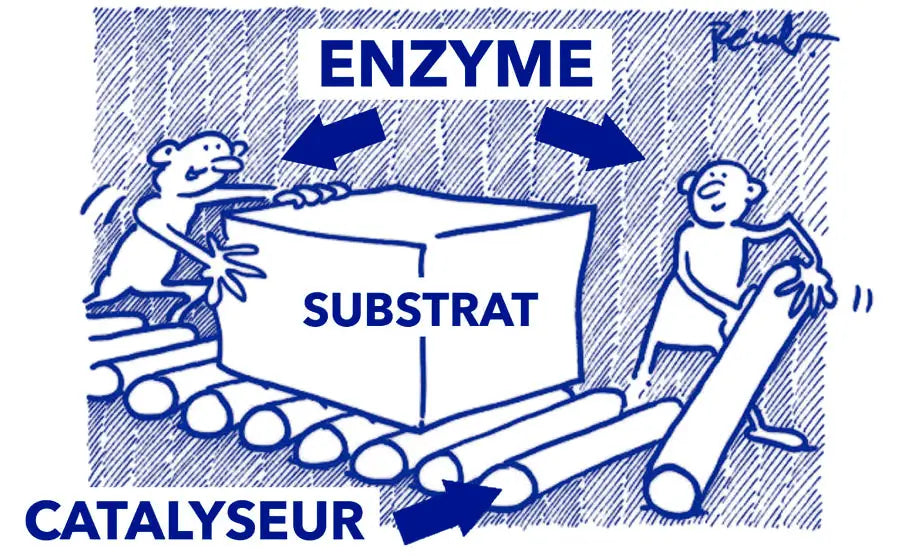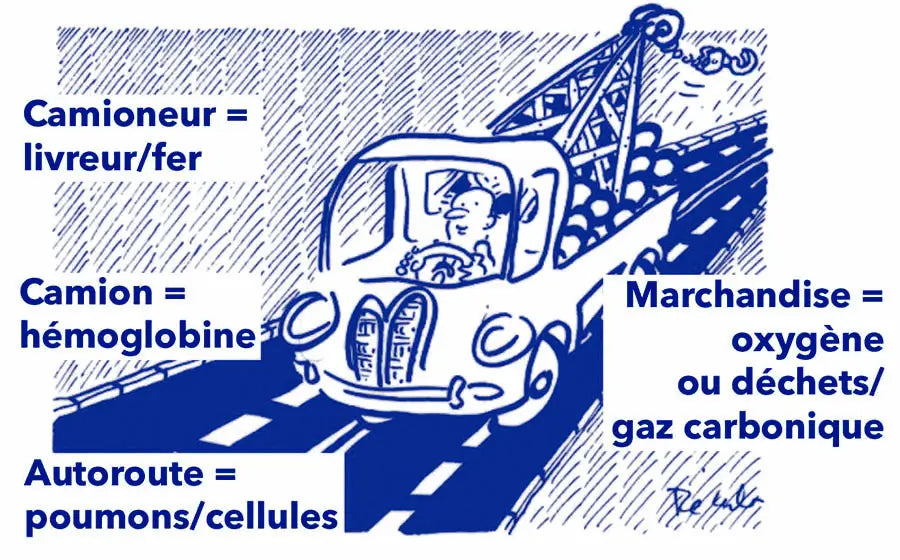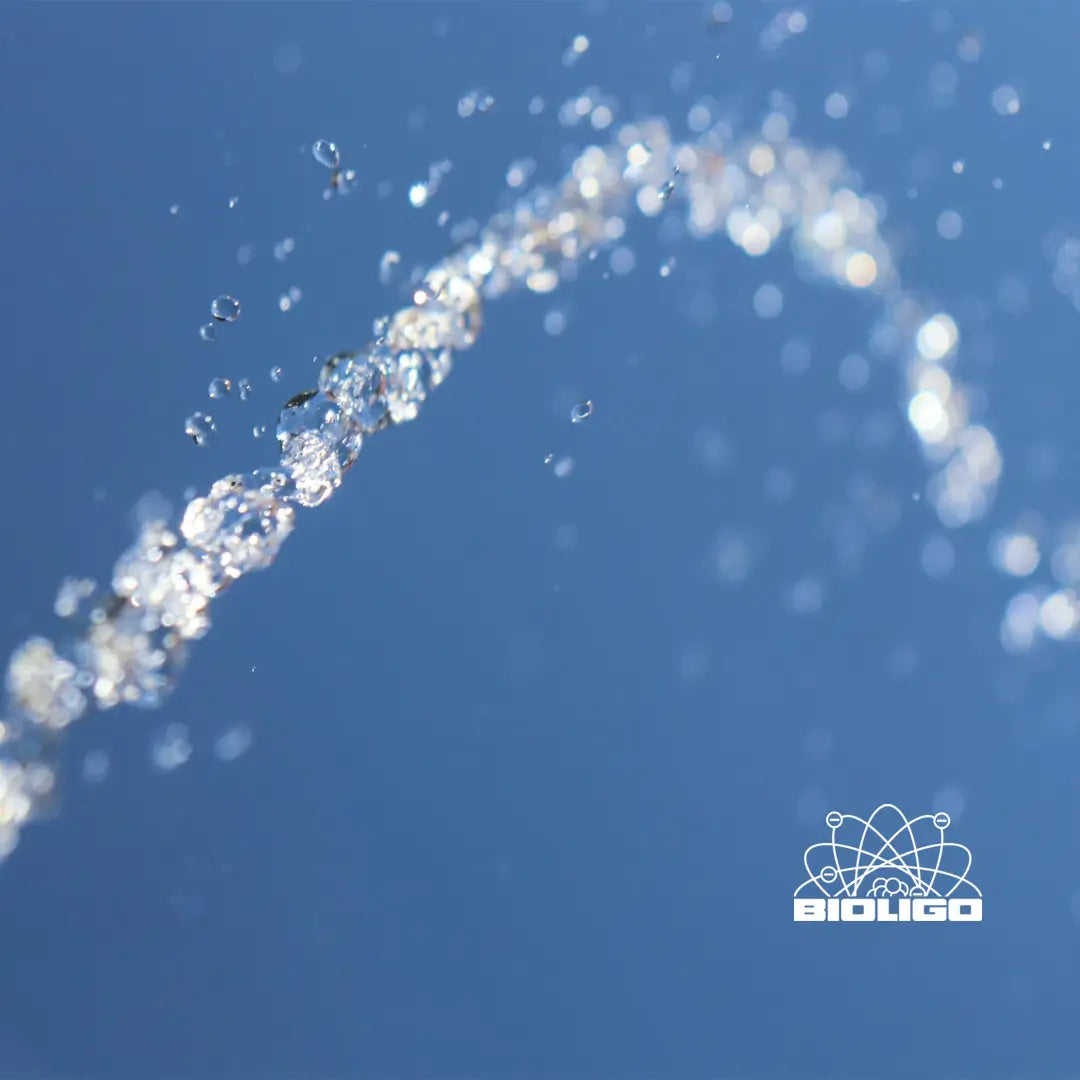


Why use trace elements when you are sick?
Being sick means that we are functioning poorly or “less well”. It is therefore bio-logical, that is to say logical with life, to use the elements that naturally make our metabolisms work to rebalance them and regain health.
-
What is Oligotherapy?
It is the therapeutic use of trace elements in ionized form, therefore liquid, at physiological dosages.
Its role is not to compensate for nutritional deficiencies, but to restart metabolic blockages. -
The role of trace elements?
Trace elements are the catalysts for the body's biological functions. Without them, there would be no functions and no life.
Catalysts facilitate biological functions by reducing the time and energy required to complete them. Recovered intact at the end of the reaction, they can be reused.
Theoretical example of catalysis
-

-
- FUNCTION
Moving a block on the ground - SUBSTRATE – Block
Material on which the catalytic action is carried out - ENZYME – Worker
Action-specific tool - CATALYST – Wooden log
Engine or tool energy
- FUNCTION
-

-
Hemoglobin
- FUNCTION – Transport > Cellular respiration
- SUBSTRATE – Goods > Oxygen or carbon dioxide
- ENZYME – Truck > Hemoglobin
- CATALYST – Trucker > Iron
-
Why use them?
Being sick means that we are functioning poorly or “less well”. It is therefore bio-logical, that is to say logical with life, to use the elements that make our metabolisms function naturally to rebalance them and regain health.
-
Any natural or synthetic medicine temporarily and partially replaces the deficient functioning of the body; recognized as a foreign element, it is eliminated by our immune system and our emunctories.
-
What do they represent?
0.01% of our weight, which justifies their name, since “Oligo” means “little” in Greek.
What are our trace element needs?
-
Quantitative need
Our needs vary greatly from one element to another. For example, we need 400 mg of magnesium per day, but only 0.1 mg of selenium. These needs are normally covered by food. Dietary deficiencies always concern a particular element, in a specific region, provided that we only eat what is grown locally. The deficiencies, of variable origins, are in ascending order of importance:
- Decreased intake (malnutrition)
- Increased needs (physical exertion, pregnancy, etc.)
- Increased losses (specific pathologies)
- Poor assimilation
- Blockages
-

Qualitative need
On the other hand, we often encounter induced deficiencies due to problems with the assimilation of trace elements by the body and the blocking of their action by external elements: medication, alcohol, tobacco, lifestyle, stress, etc. We are then in the presence of a qualitative and not a quantitative problem.

Why the ionized form?
The ionized form allows for significantly lower doses with greater effectiveness. Ionized trace elements pass quickly into the bloodstream, without the need to digest them for assimilation. Their speed of assimilation is then increased and, as a result, the return to health is accelerated.
On the other hand, the use of low doses in specific proportions and quantities makes poisoning impossible. Trace elements, although essential for life, could also be toxic, but for this to happen, it would be necessary to ingest at one time, 200 doses for the most toxic or up to 1200 doses for those that are less so.












